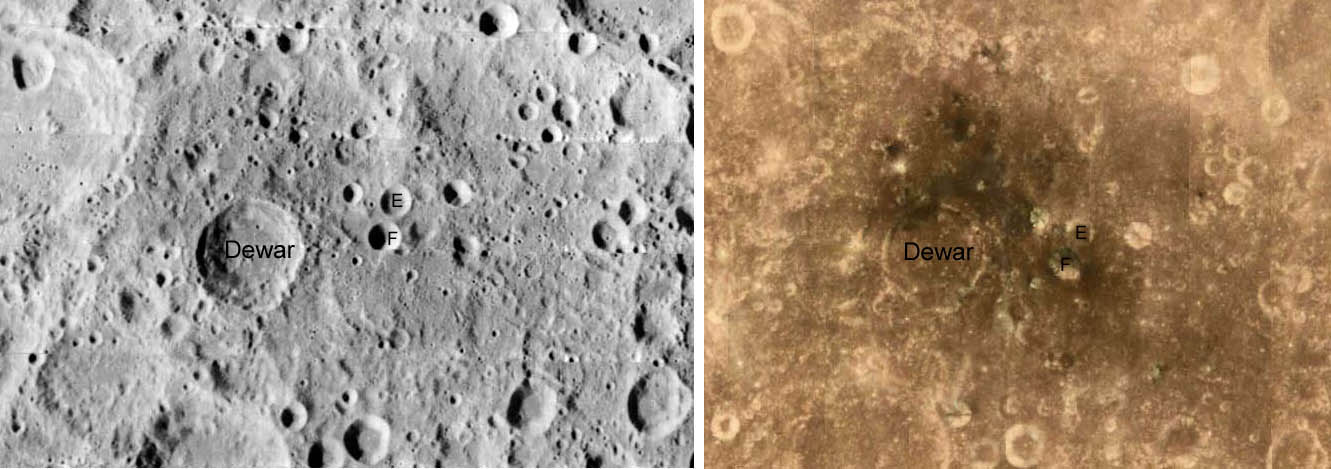Difference between revisions of "March 1, 2010"
| Line 16: | Line 16: | ||
<table class="wiki_table"> | <table class="wiki_table"> | ||
<tr> | <tr> | ||
| − | <td><!-- | + | <td> <!-- RemoveRevolverMaps --> |
| − | + | <!-- RemoveRevolverMaps --> | |
| + | </td> | ||
<p><b>Yesterday's LPOD:</b> [[February 28, 2010|Hole Full of Shadow]] </p> | <p><b>Yesterday's LPOD:</b> [[February 28, 2010|Hole Full of Shadow]] </p> | ||
<p><b>Tomorrow's LPOD:</b> [[March 2, 2010|More Than a Bucket Full]] </p> | <p><b>Tomorrow's LPOD:</b> [[March 2, 2010|More Than a Bucket Full]] </p> | ||
| − | |||
<!-- End of content --> | <!-- End of content --> | ||
{{wiki/ArticleFooter}} | {{wiki/ArticleFooter}} | ||
Latest revision as of 20:48, 8 February 2015
Not a Whiskey, Nor a Flask

left Lunar Orbiter 2-034 image from LPI Lunar Orbiter Photo Gallery and right Clementine image from Map-A-Planet
From the Orbiter view the vicinity of the farside crater Dewar is unremarkable. But with high Sun illumination and Clementine's ultraviolet-visible image a new story emerges. This is a large area of dark ejecta, even though there is no evidence of volcanism or mare lavas nearby. According to the Clementine view the most intense (=thick?) unit comes from a nondescript crater north of Dewar and another is just inside Dewar's northwest rim. Other craters north of Dewar and also the simple crater Dewar F to the east also brought up the dark material. Lunar Prospector data also show that this area is high in thorium, which is unusual on the farside. Sam Lawrence, then at the University of Hawaii, and colleagues determined that the dark material was very similar to nearside high-thorium basalts. There must be a buried layer of mare basalts (cryptommare) under this normal looking highland topography. This is odd because the area of dark material is not inside a basin - at least none is visible. The fact that nearby similar-sized impact craters did not dredge up dark material suggests that the cryptomare was very limited in extent, perhaps only about 100 km wide. Science has identified the material, but no one yet is able to explain how it got to the middle of the farside.
Chuck Wood
Related Links
Martel, Linda (2008) A Farside Geochemical Window into the Moon. Planetary Science Research Discoveries.
Yesterday's LPOD: Hole Full of Shadow
Tomorrow's LPOD: More Than a Bucket Full
COMMENTS?
Register, Log in, and join in the comments.



